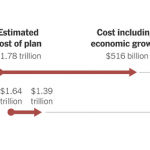In homes across America this weekend, children will turn up in Halloween costumes, calendars will turn over to November, and clocks will turn back in honor of Daylight Saving Time. And then – like clockwork – retailers will spring forward with their all-out carpet-bombing assault via the American airwaves for pre-Christmas, Grey Thursday, Black Friday promotions, and financial pundits will once again “Get It Wrong” as they attempt to extrapolate the state of the consumer based on this information. I can’t take another year of this insanity, so I’ve decided to launch a “preemptive strike” – in the form of a remedial Case Study – to explain what should be an unbelievably obvious pattern of consumer behavior, but which continues to baffle the talking heads on every online, offline, and inline business channel.
Case Study
Everyone who drives a vehicle eventually needs tires. Tires are a fairly expensive purchase, averaging about $100 per tire, meaning that replacing all four tires would cost $400. Question: What would happen if every tire company began slashing prices on tires by 50% every year during the months of November and December – meaning that instead of $400 you could upgrade your radials for only $200? Answer: People would begin planning on and “expecting” this promotional pricing, and would budget and “time” their spending habits accordingly. For example, if your tire tread was beginning to wear thin in August, you would figure out a way to keep them functioning until the half-price sale later in the year. And if you were planning on upgrading your tires in February, you would strategically pull forward your purchase by two months so that you could take advantage of these 50% off sales, enabling you to double your purchasing power.
Christmas Study
Folks, this is exactly what’s happening with today’s consumer as it relates to Christmas. Over the years, retailers have conditioned consumers to expect crazy 50%, 60%, even 75% discounts every year around the Holiday season, which now runs (at a minimum) from November 1 through the end of December. As a result, buyers now plan their annual purchases to correspond with this one time of the year when they get the most BANG for their flat-lining-wages BUCK.














Leave A Comment